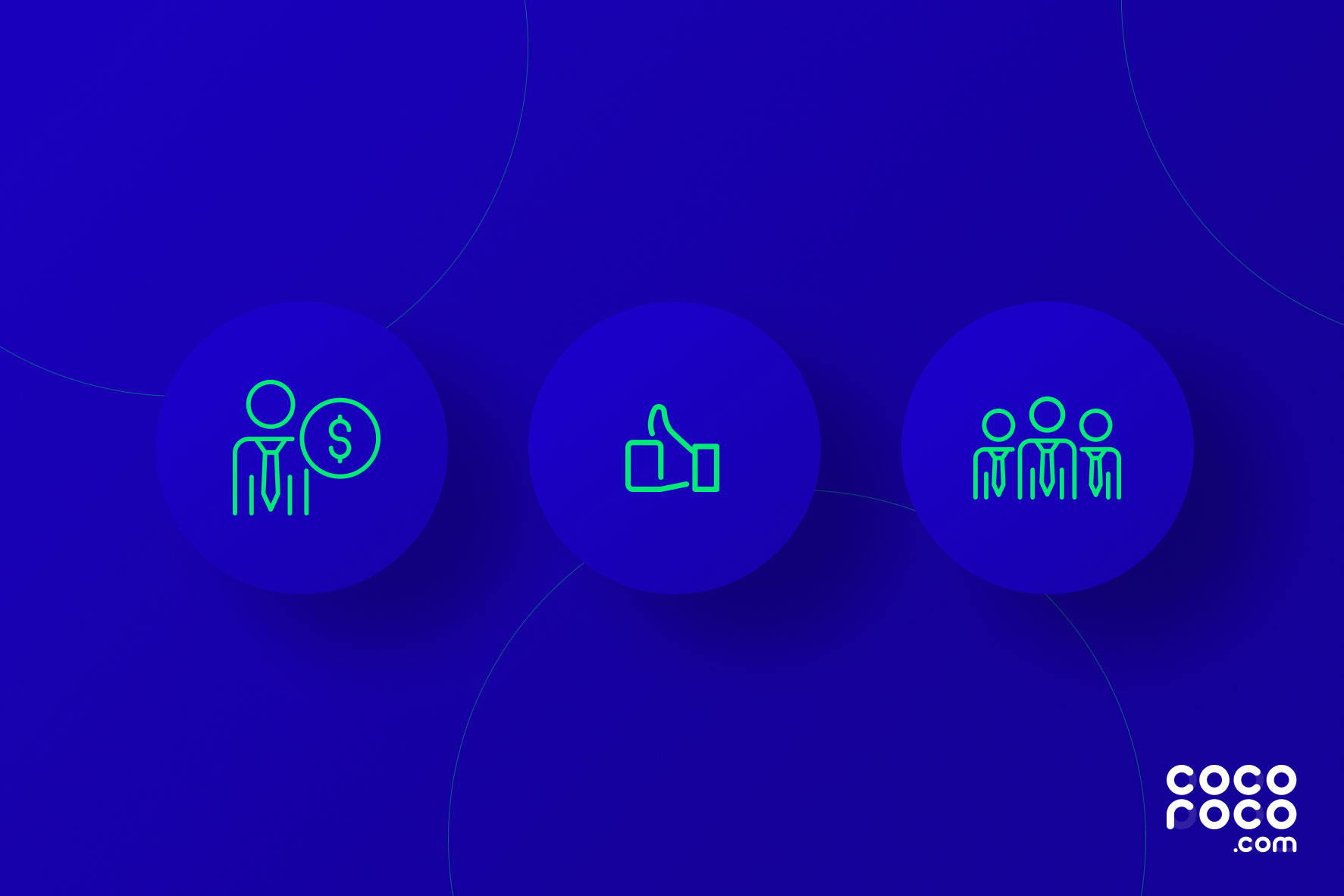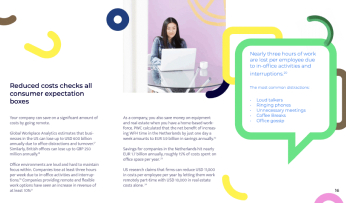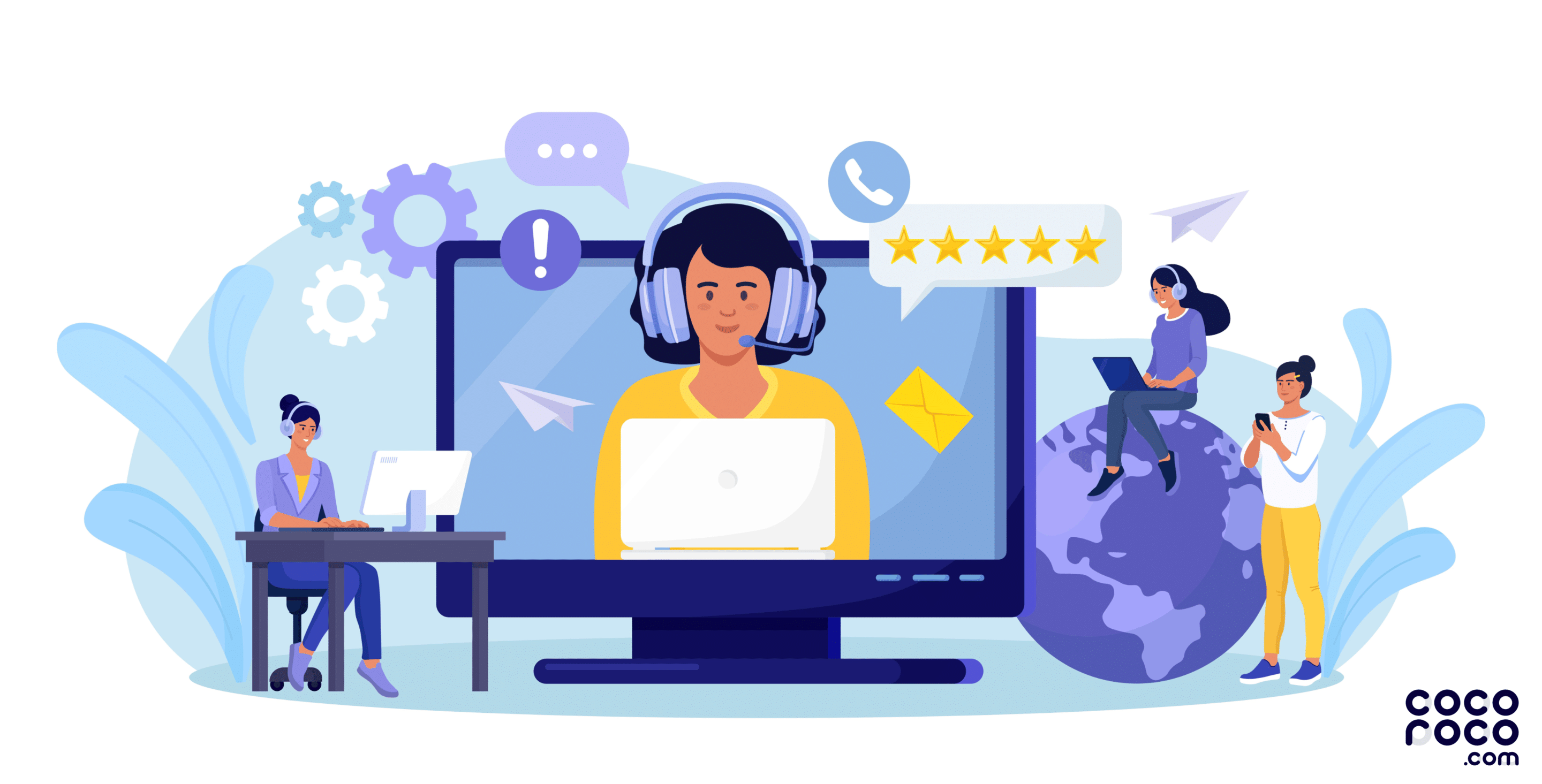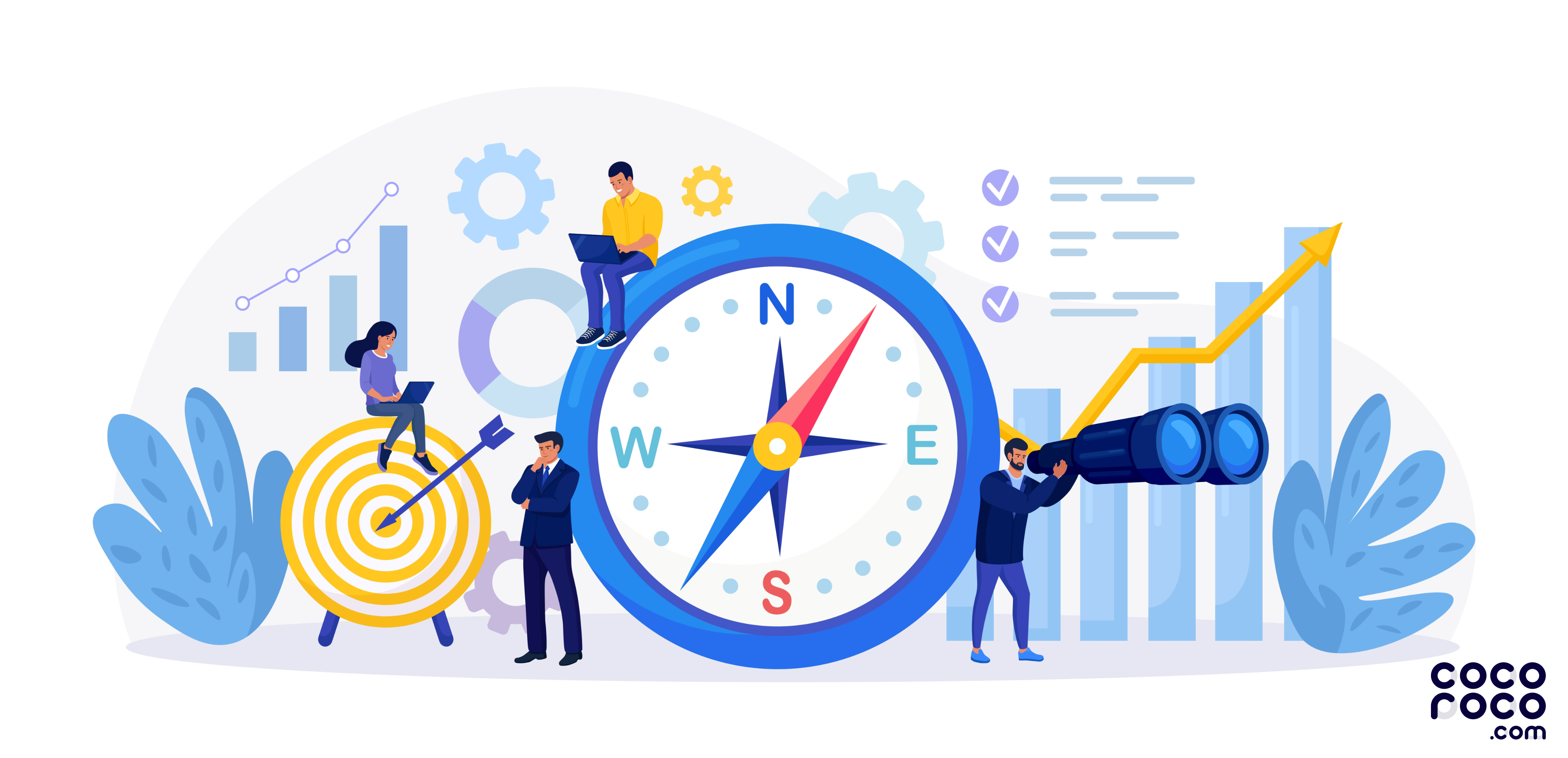Want to keep your customers happy and your business thriving? It all starts with finding the right customer service model. But with so many options out there, where do you even begin?
Great customer service is the key to a successful business. But did you know that the right customer service staffing model is just as important? Finding the perfect fit can distinguish happy customers and a tarnished reputation.
We’ve compiled this guide to help you navigate different customer service staffing models. Whether you’re considering filling your job openings with in-house staff, outsourcing, or both, we’ll give you the pros and cons of each. Moreover, we’ll show you how our solutions combine the best of all worlds to create a winning customer service team tailored to your business needs.
The importance of customer service staffing models
No two customer bases are the same, and no two companies are the same. As a result, there’s no one-size-fits-all solution for customer service staffing models.
Customisation is critical to reaching your customers and providing the service they expect. However, training and maintaining a customer service team can be a significant expense for any business.
By exploring different customer service staffing models and considering your business’s unique needs, you can find the ideal solution that balances costs and service quality while overcoming common staffing challenges.
It’s important to carefully evaluate each option and choose the one that best fits your business and its customer base.
Common customer service staffing models
Staffing is a critical factor when it comes to providing excellent customer service. There are three standard customer service staffing models: outsourced, in-house, and hybrid. Each model has advantages and disadvantages, so choosing the one that best fits your business needs is essential.
Understanding the pros and cons of each staffing model can help you provide exceptional customer service that will set your business apart from the competition.
Let’s examine each model to determine which aligns with your business objectives and customer service philosophy.
Outsourced staffing model
If you’re looking for a way to boost your customer service operations without breaking the bank, the outsourced staffing model might be just what you need. With this model, you’ll work with a third-party company—such as a staffing agency—that will handle all customer-facing tasks, including staffing, training, and technology.
An outsourced model is an excellent option for businesses that don’t have the resources or expertise to manage a customer service department in-house or looking for temporary staffing solutions.
The best part? The outsourcing company usually covers all the overhead costs, so you’ll save money while still providing top-notch customer service. And, because they have a team of trained customer service agents, you’ll get to tap into their wealth of expertise and experience.
Of course, outsourcing customer service to a BPO (business process outsourcing) company isn’t perfect. For example, you may feel like you’re losing control over the customer service process. There could also be a disconnect between the customer service experience and your overall brand. Additionally, the possibility of connecting your customers to less engaged agents is higher, and since you are ‘buying’ their expertise, this could be an expensive oversight.

To sum it up, here are the pros and cons of an outsourced staffing model:
Pros
- Cost-effective: Outsourcing a staffing company can be cost-effective as it saves you the expenses of hiring and training in-house staff when filling open positions.
- Access to specialised skills: Outsourcing a staffing agency or experienced freelancers can give you access to a broader pool of talent with skills you may not be able to find in-house.
- Flexibility: Outsourcing allows you to scale your customer service up or down based on your needs without making permanent staffing changes.
Cons
- Language barriers: Outsourced customer service representatives may not speak the same language as your customers, leading to communication barriers and misunderstandings.
- Quality control: Outsourcing freelancers or using a recruiting agency can make it challenging to maintain the same level of quality control as you would have with in-house staffing.
- Lack of brand understanding: Outsourced representatives may not fully understand your brand and the nuances of your business, which can lead to inconsistent customer experiences.
Examples of businesses that use the outsourced staffing model include telecommunications companies, credit card providers, and some e-commerce businesses.
In-house staffing model
The in-house staffing model involves forming a dedicated team to handle customer service operations. This means hiring and training employees responsible for customer inquiries, support requests, and other customer-facing tasks. This model is ideal for businesses that value control and want to ensure their customer service experience aligns with their brand values and culture.
One of the most exciting things about the in-house staffing model is the ability to tailor your customer service experience. You have complete control over customer service delivery and can make necessary changes to keep your customers happy. Furthermore, because your team is in-house, they’ll have a deep understanding of your brand and products, resulting in better customer interactions.
Of course, there are also some drawbacks to consider. You’ll need to invest in hiring and training employees and the technology and infrastructure necessary to support your customer service operations. The onboarding process can also be time-consuming, especially when working around notice periods for new hires. For small businesses with limited resources, an in-house customer service model can be challenging to manage.
Here is a breakdown of the pros and cons that come with this model:
Pros
- Control: In-house staffing gives you complete control over the hiring, training, and management of your customer service representatives, ensuring that they represent your brand values accurately.
- Familiarity with brand and culture: In-house representatives will likely be more familiar with your brand and company culture, which can lead to a more seamless customer experience.
- Easy collaboration: In-house staffing can promote easy cooperation between departments, ensuring the correct information is conveyed to your customers promptly.
Cons
- Higher costs: In-house staffing can be more expensive than outsourcing as it requires you to cover human resources, training, and salary costs.
- Lack of flexibility: In-house staffing can limit your ability to scale up or down quickly based on changes in demand.
- Higher turnover risk: In-house representatives may be more likely to leave the company for other opportunities.

Examples of businesses that thrive with the in-house staffing model include tech startups, small retail stores, and local restaurants. These businesses appreciate the control that comes with this model and are willing to make the investments necessary to make it work.
Whether you work in a small business or a larger organisation, the in-house staffing model could be the perfect choice if you’re looking to take charge of your customer service operations.
Hybrid staffing model
The hybrid staffing model offers the best of both worlds for businesses looking to manage their customer service initiatives. By combining elements of in-house and outsourced staffing models, companies can have a mix of representatives to handle customer inquiries, support requests, etc., while filling the skills gaps many customer service departments face. In doing so, you’ll be able to shape the customer service experience while still benefiting from the cost savings and expertise of outsourcing.
One of the main appeals of the hybrid model is versatility. You can easily adjust the size of your customer service team based on customer demand or other factors, which helps to streamline costs and improve efficiency. This model also allows you to tap into the expertise and competencies of outsourced customer service professionals while retaining control over the customer service experience.
However, to ensure a consistent customer experience, the hybrid approach requires careful coordination and communication between in-house and outsourced teams. Additionally, if the outsourced team isn’t adequately trained or aligned with your company’s core values or culture, there’s also the potential for a mismatch between the customer service experience and overall customer experience.
In summary, here are the pros and cons that come with the hybrid staffing model:
Pros
- Flexibility: Hybrid staffing allows you to balance the cost savings of outsourcing with the quality control of in-house staffing.
- Access to specialised skills: Hybrid staffing can allow you to bring in top talent as needed while maintaining the control of in-house staffing.
- Scalability: Hybrid staffing can allow you to scale your customer service up or down without making permanent staffing changes.
Cons
- Complex management: Hybrid staffing can be more complicated to manage as it requires you to coordinate both in-house and outsourced teams effectively
- Communication challenges: Hybrid staffing can lead to communication challenges between in-house and outsourced representatives.
- Higher costs: Hybrid staffing can be more expensive than outsourcing alone, as it requires you to maintain in-house and outsourced staffing.
Telecommunications providers, software companies, and online retailers are just a few examples of businesses that have succeeded with the hybrid staffing model. This model has proven to be a versatile and practical option for customer service operations by balancing control, customisation, and cost savings.
Whether you work in a small business or a large corporation, the hybrid staffing model is worth considering if you’re looking for a flexible solution to manage your customer service operations.
Now that you know more about your options, there are some key considerations before deciding.
What to consider when choosing a staffing model
Having the right staffing model can make all the difference in customer service. So choosing a solution that fits your needs, budget, and customer service goals is essential.

Choosing the right staffing model can be overwhelming, but by considering a few key factors, you can find a solution that will work for your staffing needs.
Budget
Money matters, and when it comes to customer service staffing—and the general hiring process—it’s essential to have a clear understanding of your budget. Budgeting correctly will determine the number of customer service representatives you can hire and the resources you can allocate for training and development.
Tip: If your budget is limited, consider an outsourced staffing model, which can offer cost savings compared to hiring an in-house team.
Ticket volumes
The volume of customer inquiries and support requests you receive is also critical when choosing a staffing model. If your ticket volume is high, you may need a larger customer service team or consider outsourcing to a call centre or virtual support team.
Service level agreements
Service level agreements (SLAs) are agreements between a business and its customers that outline the minimum level of service provided. When choosing a staffing model, it’s essential to consider whether it will allow you to meet your SLAs and provide consistent, high-quality customer service.
Customer service goals
Your customer service goals should always be at the forefront when choosing a staffing model. After considering the various factors involved, it is clear that there are pros and cons to both in-house and outsourcing models. However, a potential solution that combines the best aspects of both models is Cocoroco.
Cocoroco is a flexible staffing model that allows businesses to have dedicated customer service teams that fully integrate into their company culture and brand. At the same time, Cocoroco provides the benefits of outsourcing, such as access to a large pool of trained and experienced customer service professionals and the ability to scale up or down quickly based on ticket volumes and other factors.
Your business can use a platform like Cocoroco to provide personalised and customised customer service that aligns with their goals while being efficient and cost-effective. Overall, Cocoroco represents a new approach to customer service staffing that can provide the most smooth and seamless customer service experience for customers.
Cocoroco Solutions
At Cocoroco, we understand the challenges of customer service staffing, so we offer a range of solutions to help you find the right balance between cost, quality, and efficiency.
We are the matchmaker and the link connecting your business and the customer service experts in our global talent pool. Tapping into that resource means having access to over 35,000 fully assessed and multilingual customer service agents equipped with the necessary tools and technologies to handle various customer inquiries and issues.
So whether you require agents with email, chat, or phone support expertise, our talent pool has the skill set you’re looking for, and they’re ready to start working with you within 14 days. Our solutions include the following:
Burst
Our Burst solution is designed for companies that experience spikes in ticket volume and need to quickly ramp up their customer service capacity, short-term or for a specific project. Burst is the right solution for you if you’re looking for a part-time, flexible, and cost-effective way to meet your customer service needs during peak periods.
Companies like Swapfiets have leveraged our Burst Solution to quickly scale their customer service capacity during peak periods.
Seasonal
Our Seasonal solution is designed for companies that experience fluctuations in ticket volume throughout the year. Seasonal is the right solution for you if you’re looking to accommodate seasonal spikes in customer service demand without hiring additional permanent staff.
Our Seasonal solution has helped Rituals and other companies effectively manage peak customer service demands during seasonal spikes, providing a flexible, cost-effective solution that ensures high-quality service and customer satisfaction.

Core
Our Core solution is designed for companies that require a full-time, long-term customer service team. This model is the right solution for your company if you are looking for a dedicated, cost-effective, and scalable customer service solution. Our Core solution provides companies with a team of experienced customer service professionals who can be customised to meet your specific needs and requirements.
Bugaboo is one of the companies that has successfully implemented our Core solution to streamline and optimise their customer service operations.
In conclusion
Choosing the right customer service staffing solution is essential for any business that wants to provide excellent customer service while balancing cost and quality. While outsourcing, in-house staffing, and hybrid models are common options, evaluating your business’s and customers’ needs are important to determine which model will work best.
Our unique solutions make this possible on one platform, providing a cost-effective approach to customer service staffing. We suggest regularly re-evaluating your chosen model to ensure it meets the needs of your business and customers.
You can contact us or book a free demo to learn how our staffing solutions can help your business provide excellent customer service. Remember, a happy customer is a loyal customer, and investing in the right customer service staffing model can lead to long-term business success.










